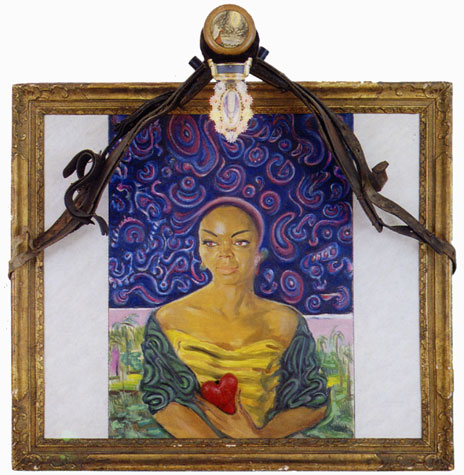Biographical Data
Born in Neuilly-sur-Seine, near Paris, in 1936. He lives and works in Paris. From the very beginning, Jean-Jacques Lebel works simultaneously in his artistic creations, in writing, in editing, in organizing exhibitions, in his political militancy, etc. He declares: “I won’t accept giving in to exclusives, conventions, common belief, dogmas; neither in poetry, art or life”. In 1955, the same year his first individual exhibition takes place, he publishes the magazine Front Unique. A Fluxus theorist, in the 60’s he begins to create happenings and translates to French texts by William Burroughs, Allen Ginsberg, Lawrence Ferlinghetti, Gregory Corso, etc. He is co-organiser of L’Anti-Procès, exhibition and manifestation against the Algerian war and torture (1960-1961). He is the initiator of the Festival de la Libre Expression (1964) and the Festival international Polyphonix (1979), events that bring together artists, poets, moviemakers, and musicians from all over the world. In 1968 he participates with the Mouvement du 22 mars, the anarchist group Noir et Rouge and with Informations et Correspondances Ouvrières. He also produces programs for France culture and organizes exhibitions such as Dessins d’écrivains (Imec, Abbaye d’Ardenne, France, 2008).
Brief Chronology
In 1960, Jean-Jacques Lebel creates the first European happening: L’Enterrement de la Chose (Venice). Together with Baj, Crippa, Dova, Erró and Recalcati he paints the Grand Tableau Antifasciste Collectif (1960). Later he makes performances, “direct poetry” with Erró, Robert Filliou, Allan Kaprow, Tetsumi Kudo, Claes Oldenburg, Yoko Ono, Nam June Paik, Daniel Pommereulle, etc. He creates collages or paintings on wood, these are political (Mao/de Gaulle relation d’État à État, la contre révolution permanente, 1964), erotic or hommages (Mon cœur ne bat que pour Picabia, 1962). He creates sonorous modifiable sculptures. After a long period without new creations, he exhibits again in 1988. He presents at the Pompidou Center Monument à Félix Guattari, a huge multimedia motorized machine that rotates and on which “performers” intervene (1994-1995). He creates Reliquaire pour un culte de Vénus (1998-2004): a large installation of images and objects that evolves depending on the exhibition spaces. In 2000 he creates a sonorous device (the dadaized Bel Canto), “changes the discourse” and transforms a sculpture by Arno Breker (Aurora, on the roof of the Kunst Palace in Düsseldorf) and two nudes by Gottschalk at the entrance of the building. He creates a movie and a video installation based on the goddess of pleasure using the morphing method: Les Avatars de Vénus (2001-2007).
P.L.T.
www.louiscarre.fr
www.galerie1900-2000.com

Unchain my Heart, 1985, Metal, wood, leather, electricity, frame, 110 x 106 x 32 cm / 43,3 x 41,7 x 12,5 in.